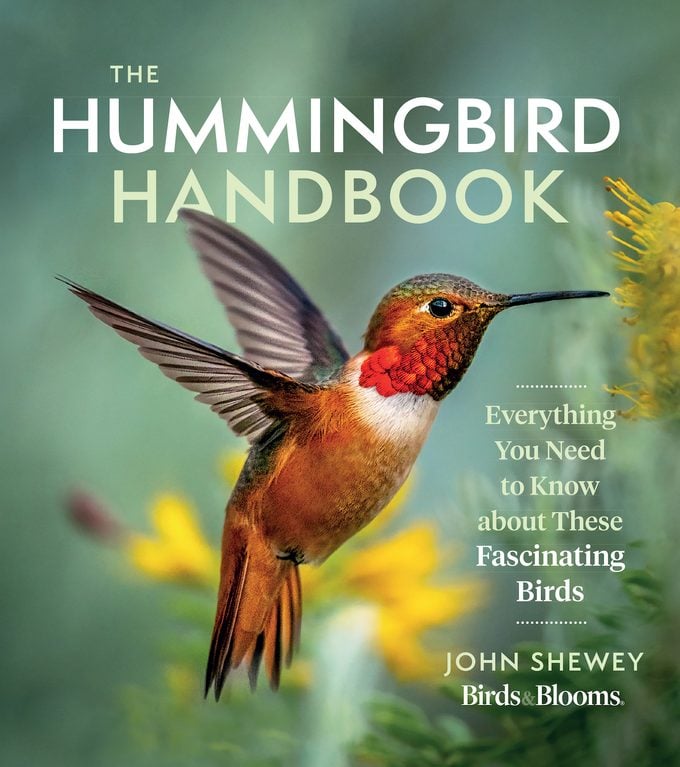22 Jaw-Dropping Hummingbird Facts
Updated: May 24, 2023
Discover fun and surprising hummingbird facts, like what is on the hummingbird diet, if they sing, how far they migrate and how fast they fly.
Our editors and experts handpick every product we feature. We may earn a commission from your purchases.
Small but speedy. Tiny but aggressive. Little bodies, big appetites. Hummingbirds are a study in extremes. They are the lightest North American birds. Most weigh less than two pennies at 3 to 4 grams. They have the fastest wings and heartbeats, the most efficient metabolisms, and the most minuscule eggs. The list could go on. Watching these tiny marvels at a feeder, it’s hard not to wonder how hummingbirds zip around so quickly or keep their feathers so brilliant. Hummingbirds are tough survivalists. Many of the actions that help them persevere also make them fun to watch. Here are fascinating hummingbird facts about the traits and behaviors you might witness.
1. What Foods Are in the Hummingbird Diet?
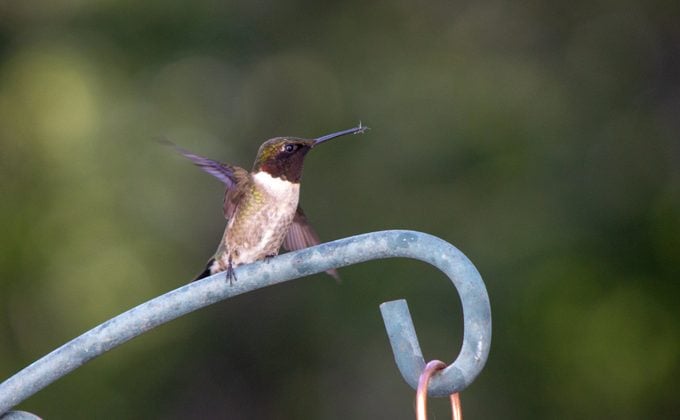
You typically see hummingbirds at nectar blooms and sugar-water feeders, but they also eat tree sap and small insects when flowers are hard to find in the wild. Nectar is the high-octane nourishment that fuels hummingbirds, but they also need body-building protein. They spend considerable time hunting and eating the small insects, spiders and other arthropods that provide the vital compound. Thanks to the fliers’ amazing agility and the special adaptation that essentially makes their bills spring-loaded sets of chopsticks, hummingbirds snatch insects out of the air. Hovering, they also glean earthbound prey from spiderwebs, vegetation and other places. Sweet oozing tree sap has a high sugar content, not unlike nectar, so it’s also ideal for hummers—but they can’t access it without a little help. Sapsuckers drill holes into trees for their food, creating rows of sap wells. Some hummingbird species readily feast on the sap from these wells.
Check out questions about hummingbird feeders answered by experts.
2. Hummingbirds Lap Up Nectar and Sugar Water
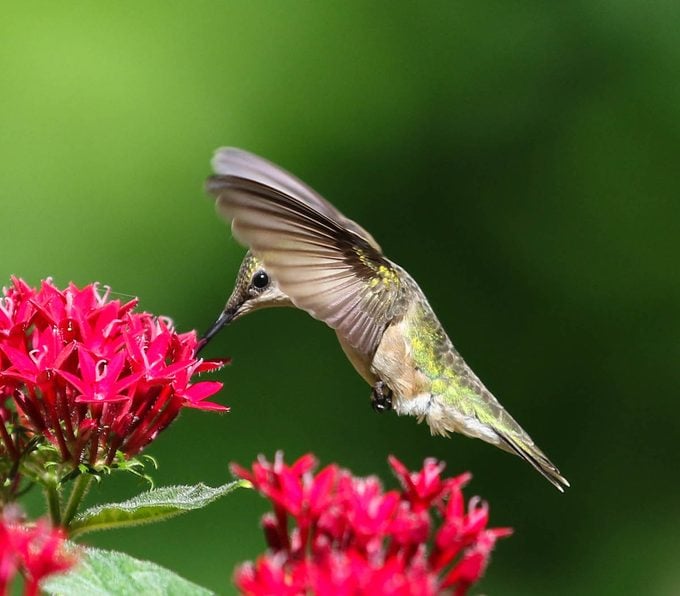
A casual observer might suggest that hummingbirds use their long, thin, dainty beaks like straws. Their tongues function as a tiny pump to suck the sought-after sweet liquid from feeders and flowers. Each bird has a thin tongue that forks at the tip, springing open to gather fluid; then the tongue retracts as the bill squeezes shut, compressing the tongue and allowing the bird to lap up the nectar. Hummers repeat this 15 to 20 times per second.
Hummingbirds will flock to a hummingbird mint plant.
3. Do Hummingbirds Return to the Same Place?
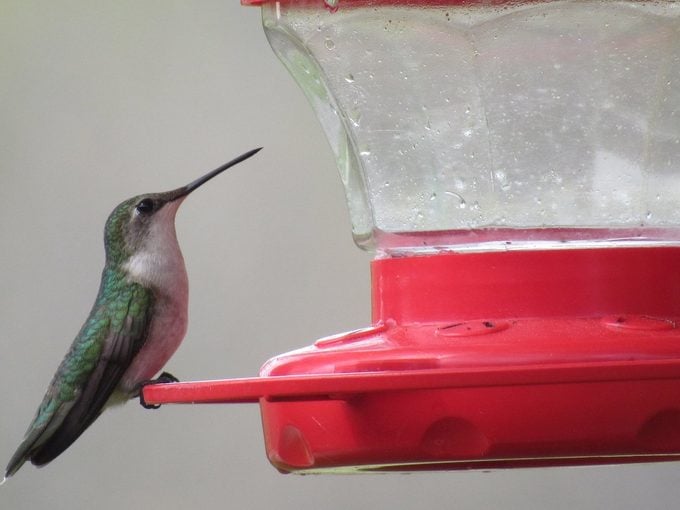
If you think the same hummingbirds come back to your feeders and flowers every year, you might be right! Banding research shows they are likely to return to the area where they hatched.
When should you put out hummingbird feeders in spring?
4. Hummingbirds Are Long Distance Migrants
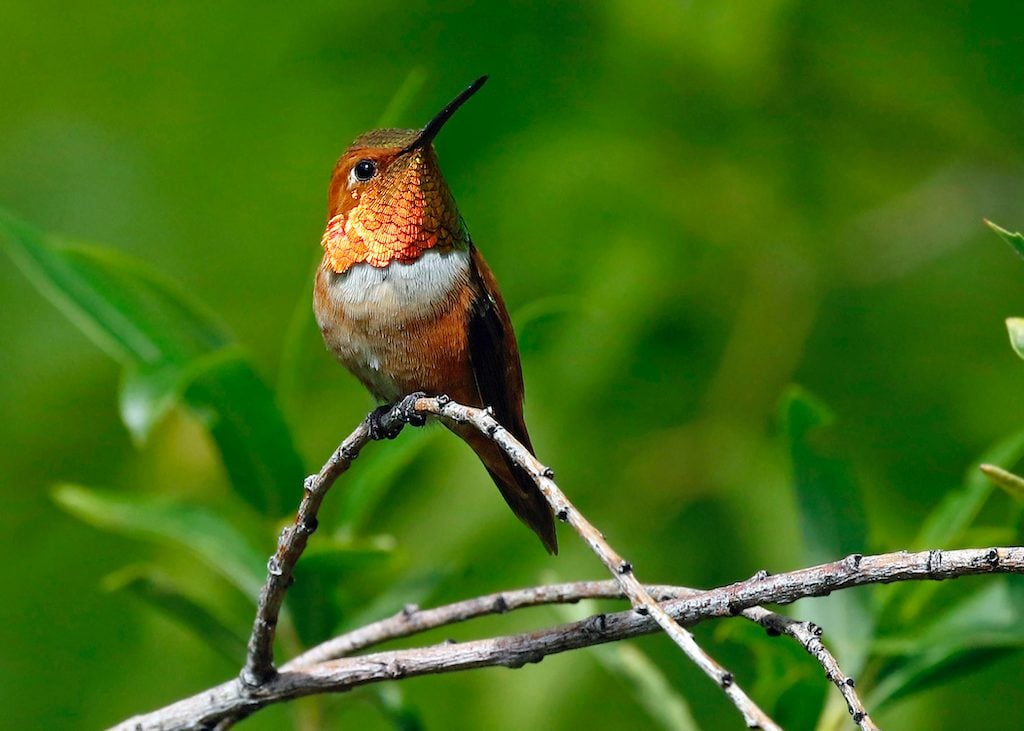
Another one of the most interesting hummingbird facts: Rufous hummingbirds migrate farther than any other North American species. They travel 4,000 miles from Mexico to Alaska every spring.
How do hummingbirds survive snow and cold weather?
5. Hummingbirds Migrate Alone
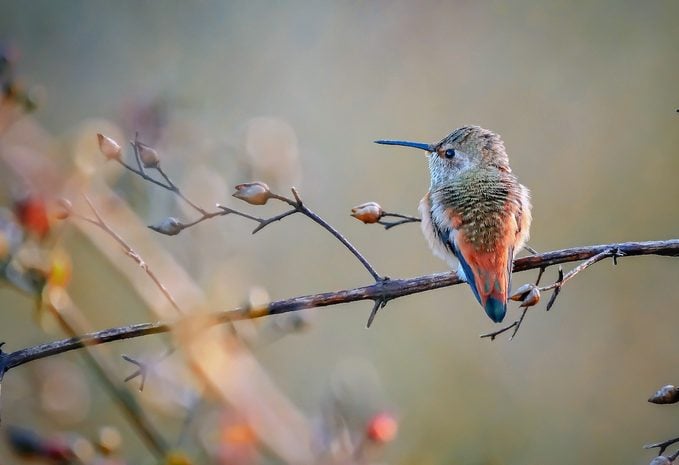
Hummingbirds are solitary migrants, so you won’t see them traveling in flocks. Wintering grounds vary by species. Most ruby-throats spend the cold months between southern Mexico and northern Panama. This is why you should keep feeders up for late migrating hummingbirds.
Read the sweet stories behind these cute hummingbird photos.
6. There Are Hundreds of Hummingbird Species
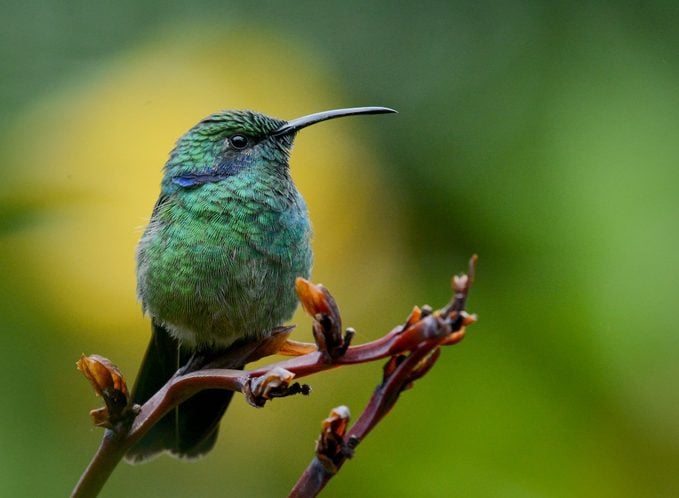
All of the approximately 340 living hummingbird species are entirely and uniquely North and South American. They live anywhere from Alaska to the southernmost tip of South America. They’re so varied that adjectives from the expanse of the dictionary are insufficient to describe these bird species. However, only 15 types of hummingbirds are regularly spotted in the United States. Discover the colorful hummingbirds of Costa Rica.
7. What Color Are Hummingbirds?
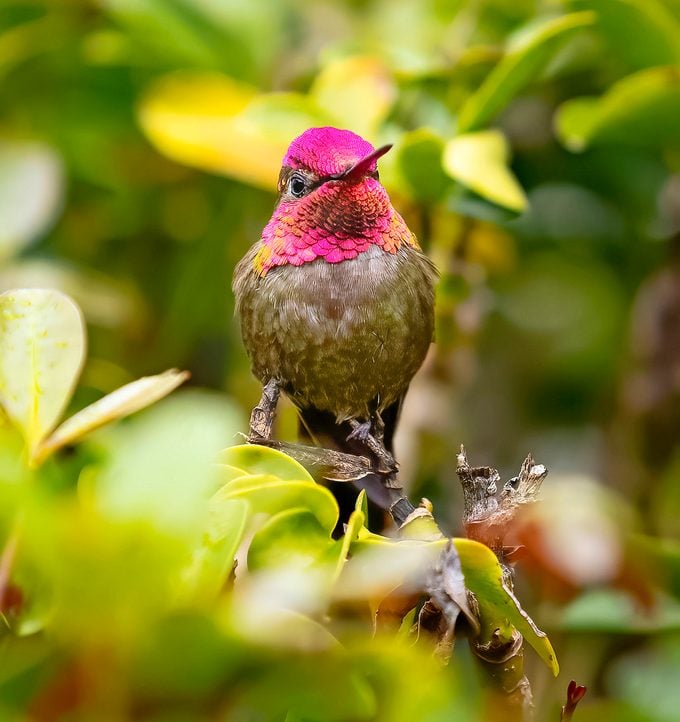
Hummers vary tremendously in the color and arrangement of their iridescent parts. Even among the handful of hummingbird species that are widespread in the United States, the array of colors is impressive. The male Allen’s and rufous hummers have blazing red-orange throats. The beautiful male Anna’s hummer has an incredible iridescent magenta throat, face and crown. And the closely related Costa’s hummingbird, whose neck feathers taper into long mustache-like points on each side, has a head wrapped in royal purple.
P.S. Did you know hummingbirds can fly backwards?
8. What Are the Colorful Patches on Their Necks?
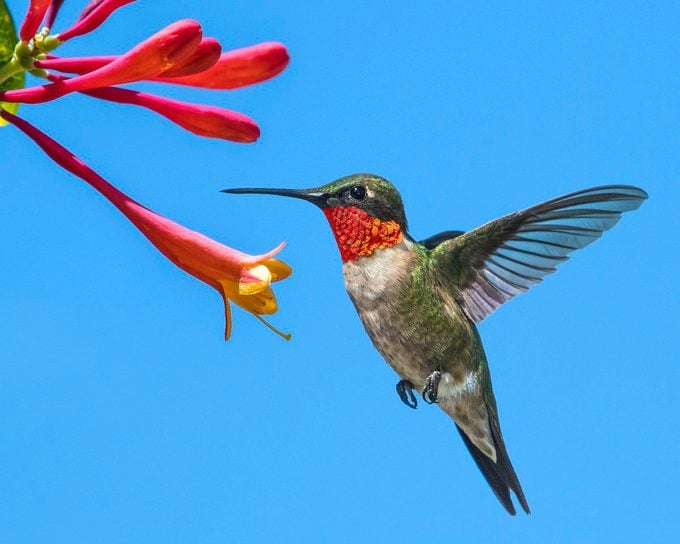
With just a turn of its head, a hummingbird explodes in iridescent radiance. Its gorget (the patch of colorful feathers covering its throat) instantly blazes in shades that span the color spectrum, depending on the species. These dazzling colors come from the feather structure rather than pigmentation. Each iridescent feather has tiny spikes that are densely packed with many layers of microscopic structures filled with air bubbles. These structures reflect light, says Bob Sundstrom, a science advisor for BirdNote, “creating color in the manner of sun glinting off an oily film on water.
Do hummingbirds mate for life?
9. Hummingbird Nests Are Tiny
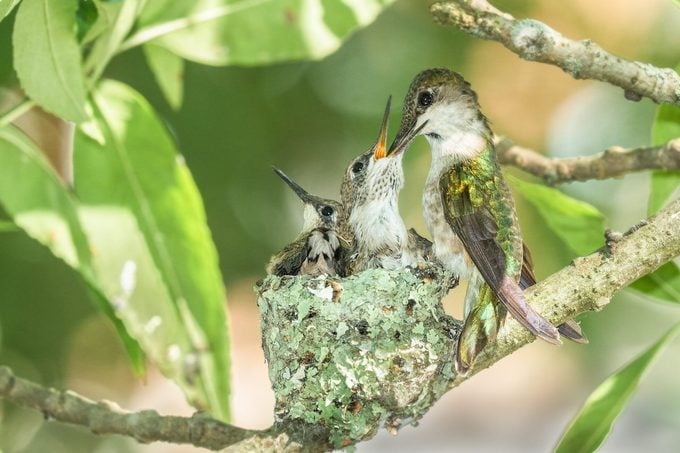
Even if you know many hummingbird facts, it’s a special treat to find one of their nests. The average nest is about the size of a half-dollar coin. The eggs inside the tiny structure look like mini white jelly beans. Here’s everything you need to know about hummingbird nests.
10. Hummingbirds Build Nests With Spiderwebs
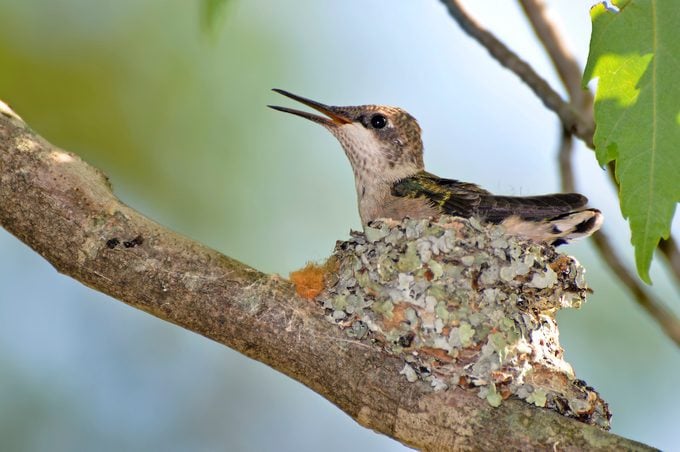
It takes less than a week (about five to seven days) for a hummingbird to build its nest. Built by females only, nests are made of lichen, moss, and spiderwebs. Check out 10 adorable pictures of baby hummingbirds.
11. Hummingbirds Are Aggressive
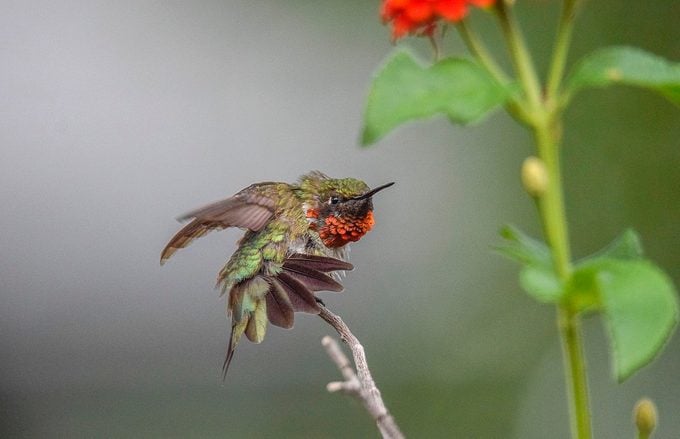
Despite their tiny size, hummingbirds can be very territorial. They spend a lot of time chasing other birds away from the feeders or flowers they’re protecting.
“Birds that drink nectar tend to be aggressive,” Chris says. Researchers’ best hypothesis is this: Most birds need to find their food—hidden seeds or grubs—but hummingbirds feed on flowers that are showy by nature. That means they can see all their food sources, but so does the competition. “They evolved to be really aggressive defending that food from other animals that might also eat it,” Chris says.
Learn more about hummingbird behavior.
12. How Do Hummingbirds Choose Flowers?
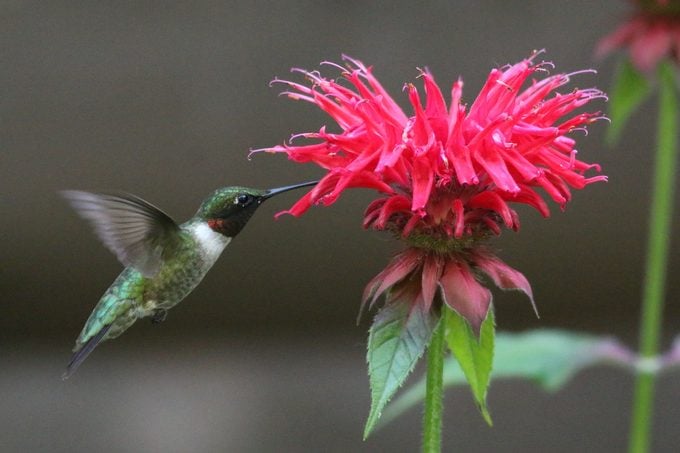
Another fascinating hummingbird fact—they have superb visual acuity. They see color even better than we do, with their vision extending into the ultraviolet spectrum. Their eyes are adapted to see warm shades better than cooler shades. This ability to easily pick out orange, yellow and red flowers amid a sea of cool green led to the long-held assumption that they prefer red over other colors. Scientists have since learned that the richness of the nectar matters more than the color of its source. The birds are quick learners, and it is nourishment they are after. With the right flowers and feeders, you can attract them to your yard, too. Just make sure you don’t have any of these plants hummingbirds dislike.
13. Hummingbirds Take Quick Breaths
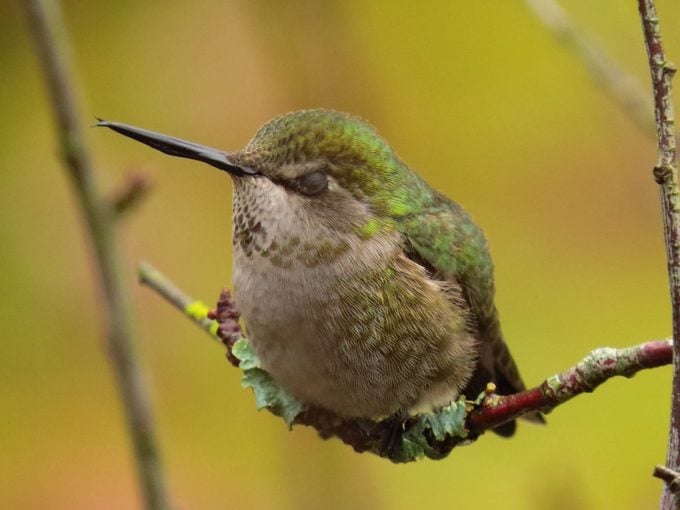
While resting, the average 4-inch hummingbird takes about 150 breaths per minute. Discover the truth about common hummingbird myths.
14. Hummingbirds Can Hover and Fly Backward
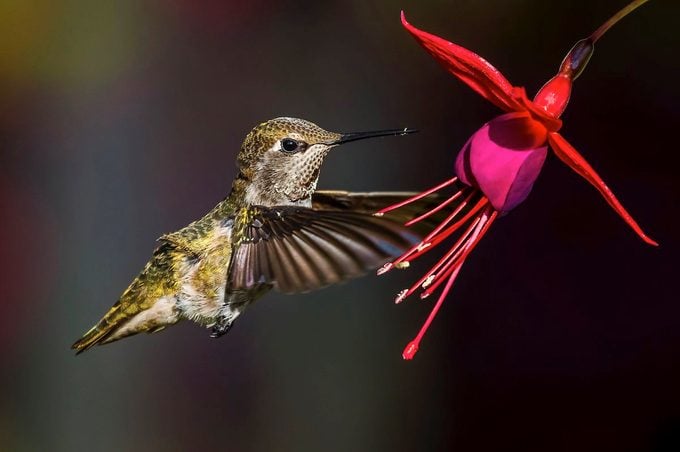
Stun your friends with these hummingbird facts. No other bird can match the hummingbird for agility on the wing. They can hover in midair at flowers and feeders, and they’re the only birds that can fly backward. Their wings move in a figure-eight pattern, which allows them to maneuver with ease. Other birds create the lift needed for flight with each downstroke of their wings. In other words, typical bird flight is achieved by flapping the wings up and down.
It’s not the speed of its wings that allows a hummingbird to hover—it’s the structure of its wing joints. Hummingbirds can rotate or twist the upper arm bones to invert their wings as they flap. This lifts them into the air on both the upstroke as well as the downstroke. The result? They are the most agile birds on the planet.
Meet the calliope hummingbird: the smallest bird in the U.S.
15. How Fast Do Hummingbirds Fly?
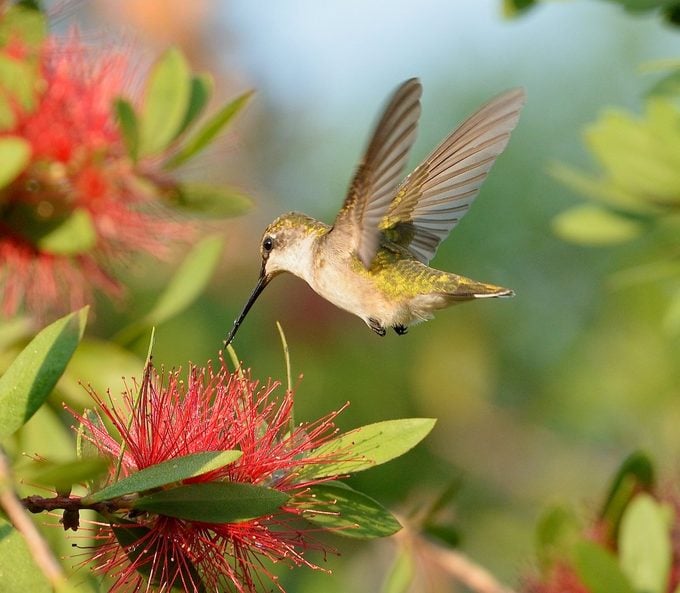
A hummingbird’s namesake hum is created by air moving around its wings. Known for erratic and agile movements, hummingbirds beat their wings more than 50 times per second, and even faster in extreme flight mode. They’re also among the fastest fliers for their size, reaching speeds of up to 37 mph, and up to 60 mph in courtship dives.
Psst—this is how long hummingbirds live.
16. Some Hummingbirds Sing
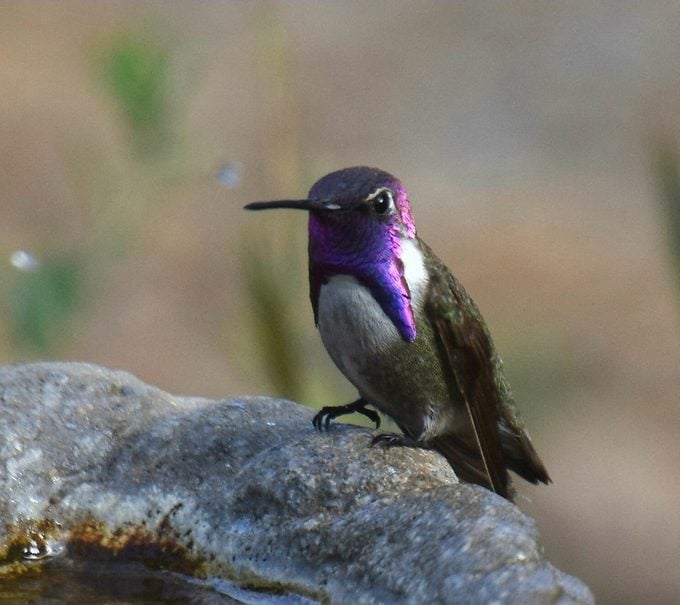
Though not as vocal as songbirds, it’s a hummingbird fact that some species, specifically male Anna’s and Costa’s, are regular singers. With other species, the most common sounds are aggressive calls, which resemble chattering or squealing. You’ll hear them when several hummingbirds are gathered near a food source. Learn more about the many sounds of hummingbirds.
17. Whirring Tail Feathers
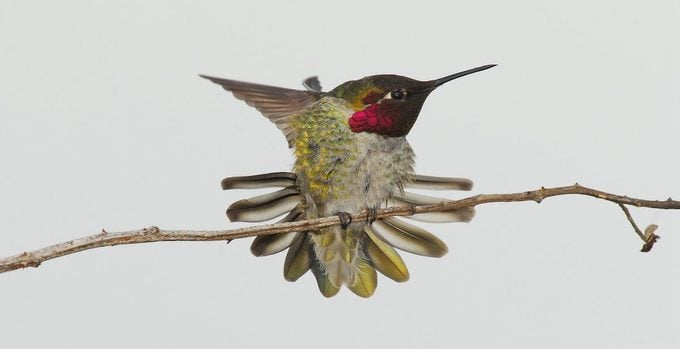
Soon after Chris Clark, an associate professor at the University of California, Riverside, began studying Anna’s hummingbirds, he wondered about their tails. “They’re these little fighter jets,” he says. “What are they doing evolving these really long tails that might slow them down?”
He discovered in his research that the stiff tail feathers of male Anna’s make songlike sounds. These noises are part of the courtship display as the males dive to attract females’ favor. The wings of hummingbirds make different sounds—what Chris calls wing trills. “On broad-tailed hummingbirds, the males have this little notch in the outer part of their wings,” he says. “They sound like a cricket when they fly.” Other species, including Allen’s, rufous, and to a lesser extent ruby-throated and black-chinned, also have these trills. And in these birds, the trills are in place of songs, Chris says, with males using the sounds to declare and defend territory. Here’s how you can help hummingbirds in extremely hot weather.
18. Hummingbirds Love Bird Baths
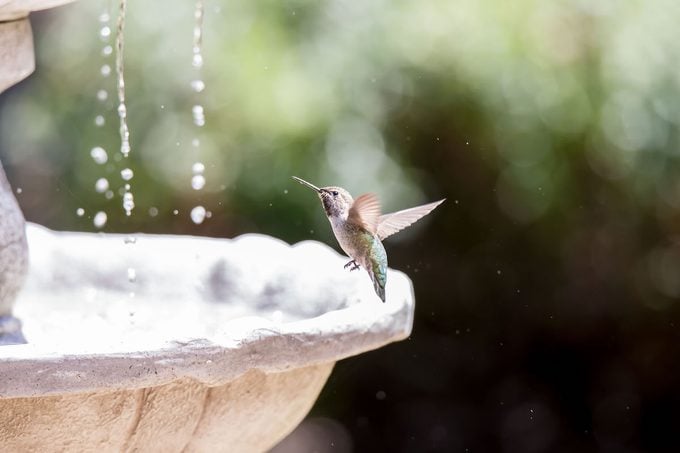
A birdbath with a small mister, bubbler, or sprayer attracts hummingbirds. It’s a rare sight, but they might fly through the mist of a lawn sprinklers, too! Hummingbirds meticulously preen their feathers. In that respect, they are like race car drivers who take immense care to keep all parts of their automobiles in perfect working order. Hummers love to take a shower—or even a bath—using water to help clean their plumage, and they are attracted to gardens with water features, intentional or not. Of course, hummers visit bird baths and other standing-water features as well.
Will hummingbirds use a birdhouse?
19. Hummingbirds Have Olympic Metabolisms
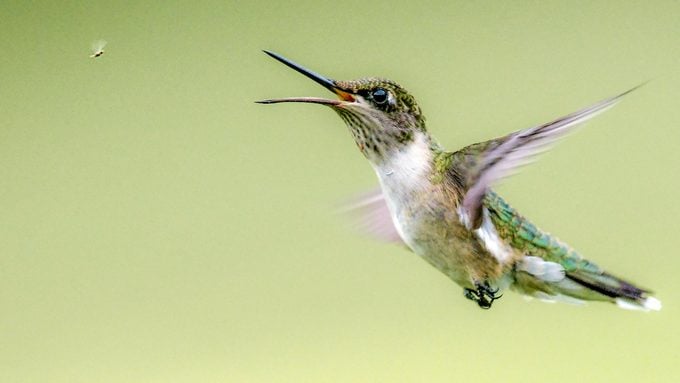
Hummingbirds actively defend their food sources because they need to feed every 10 to 15 minutes. Flying is an energy-intense endeavor for hummers. In the process, they ingest levels of sugar that would be dangerous to other animals. That’s what led Ken Welch Jr., an associate professor at the University of Toronto Scarborough, to study hummingbird metabolism. “Hummingbirds maintain a blood sugar level, even when they’re fasting, that would make your primary care physician falter,” Ken says. Hummingbirds have highly efficient digestive organs. The sugar gets into their bloodstream quickly, Ken says. “The average hovering metabolic rate of an Anna’s hummingbird is, gram per gram, about 10 times what an elite human endurance athlete can achieve,” Ken says. And that extremely fast metabolism also can plummet when the birds go into torpor to conserve energy or bulk up before migration. “They can go from the highest metabolic rate of any bird while hovering, to one of the lowest in torpor,” Ken says. A study in hummingbird facts and biological extremes, indeed.
Grow potted flowers and plants that attract hummingbirds.
20. How Hummingbirds Spend Their “Free Time”
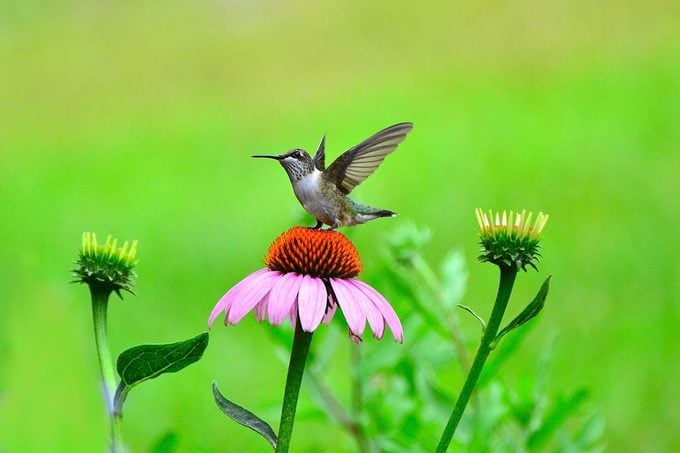
Q: How do hummingbirds spend their time when they aren’t at a feeder? – Birds & Blooms reader David Worrell
Birding experts Kenn and Kimberly Kaufman write, “Even in a yard that is well-stocked with sugar-water feeders, hummingbirds will regularly visit any flowers that are available and catch tiny insects to supplement their diet. In the breeding season, the females are extremely busy with building a nest, incubating eggs and feeding their young. Male hummingbirds don’t take any part in nesting or chick-rearing duties. Instead, they spend most of their spare time chasing away rival males or watching for females so they can resume courtship activities.”
21. Groundbreaking Hummingbird Photography
In August 1947, National Geographic published a series of photographs by Harold Edgerton of a ruby-throated hummingbird frozen in flight. The photos represented a groundbreaking invention important to our appreciation of hummingbirds today—the creation of the electric flash, which could emit a burst of light that lasted 1/100,000 of a second. That made it possible to capture images our eyes couldn’t see, including a hovering hummingbird’s wings. This allowed bird enthusiasts to learn hummingbird facts and appreciate these tiny dynamos in detail previously unseen.
You need to see these 50 stunning hummingbird pictures.
22. The First Hummingbird Feeders
Another key invention was the feeder that attracted the attention of that ruby-throated hummingbird. It was a blown-glass sugar water feeder devised by Laurence Webster, who made it to feed hummingbirds in his New England gardens. National Geographic readers were immediately transfixed by the concept of feeding hummingbirds and wanted feeders of their own. In 1950 Audubon Novelty Company released the first commercially available hummingbird feeder and called it “the Webster Hanging Feeder.”
Psst—we found the best hummingbird gifts for any occasion.
Discover More Hummingbird Facts
Birds & Blooms joined forces with author John Shewey on a new book, The Hummingbird Handbook. Pick up a copy to learn even more fascinating and fun hummingbird facts. Here’s even more of our favorite hummingbird books.

